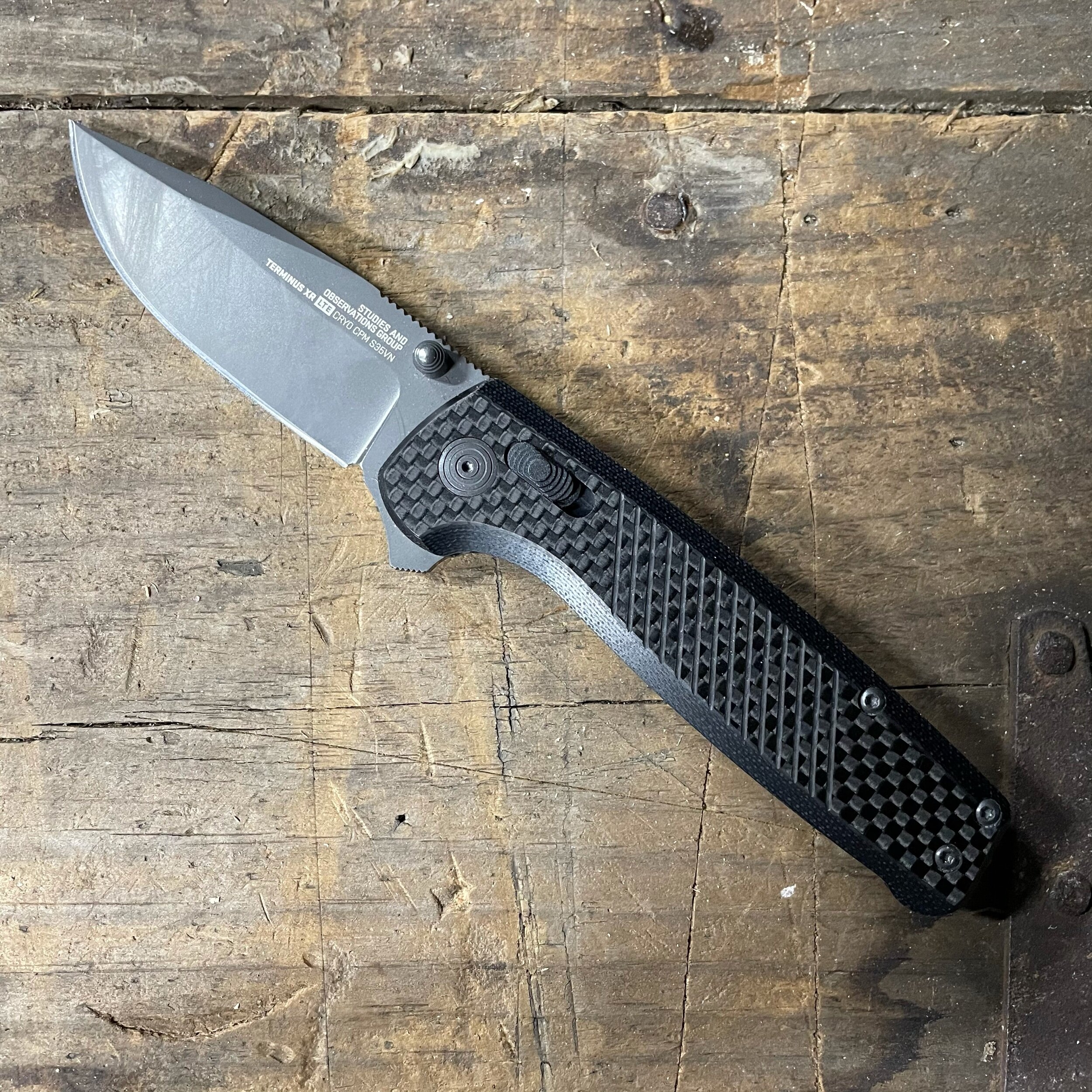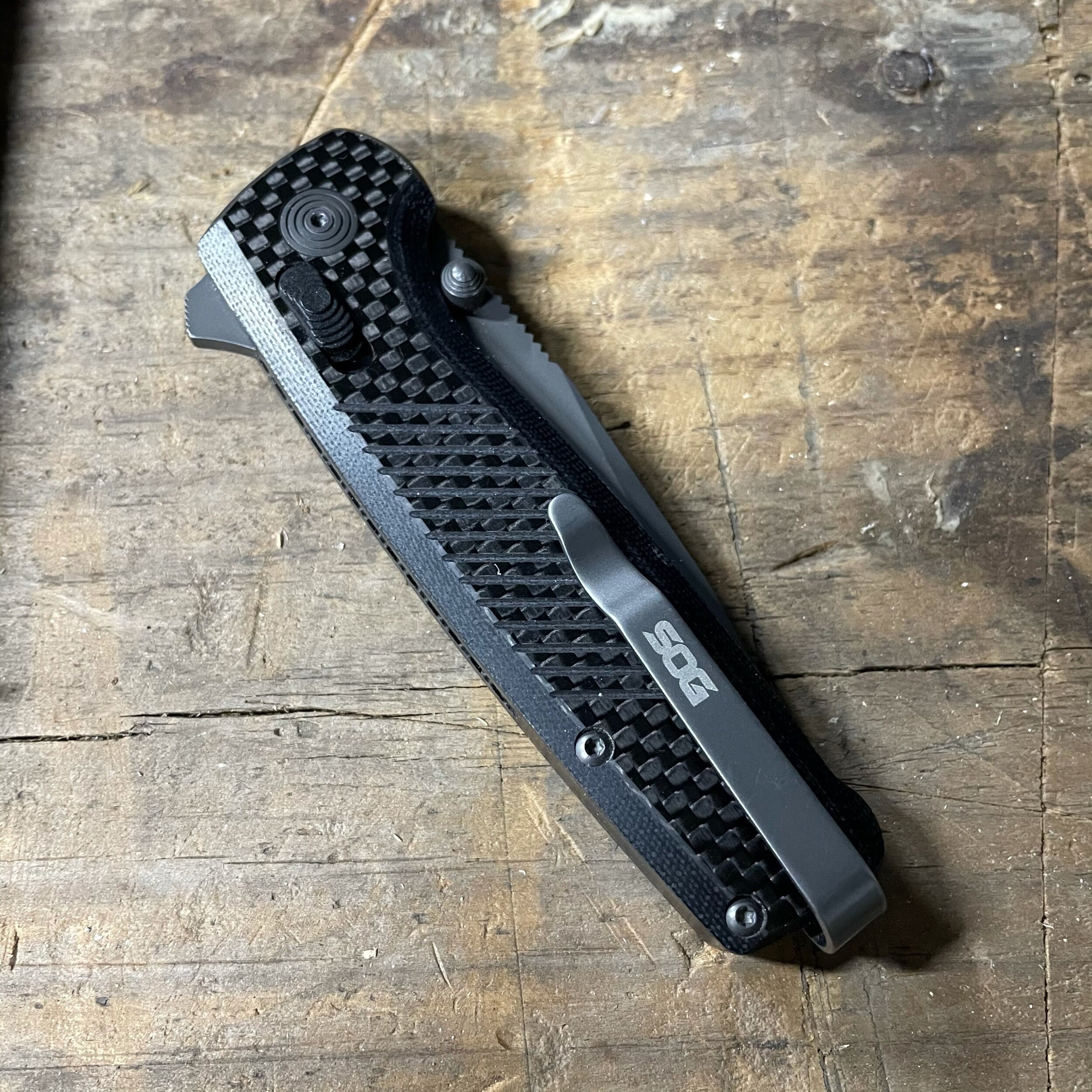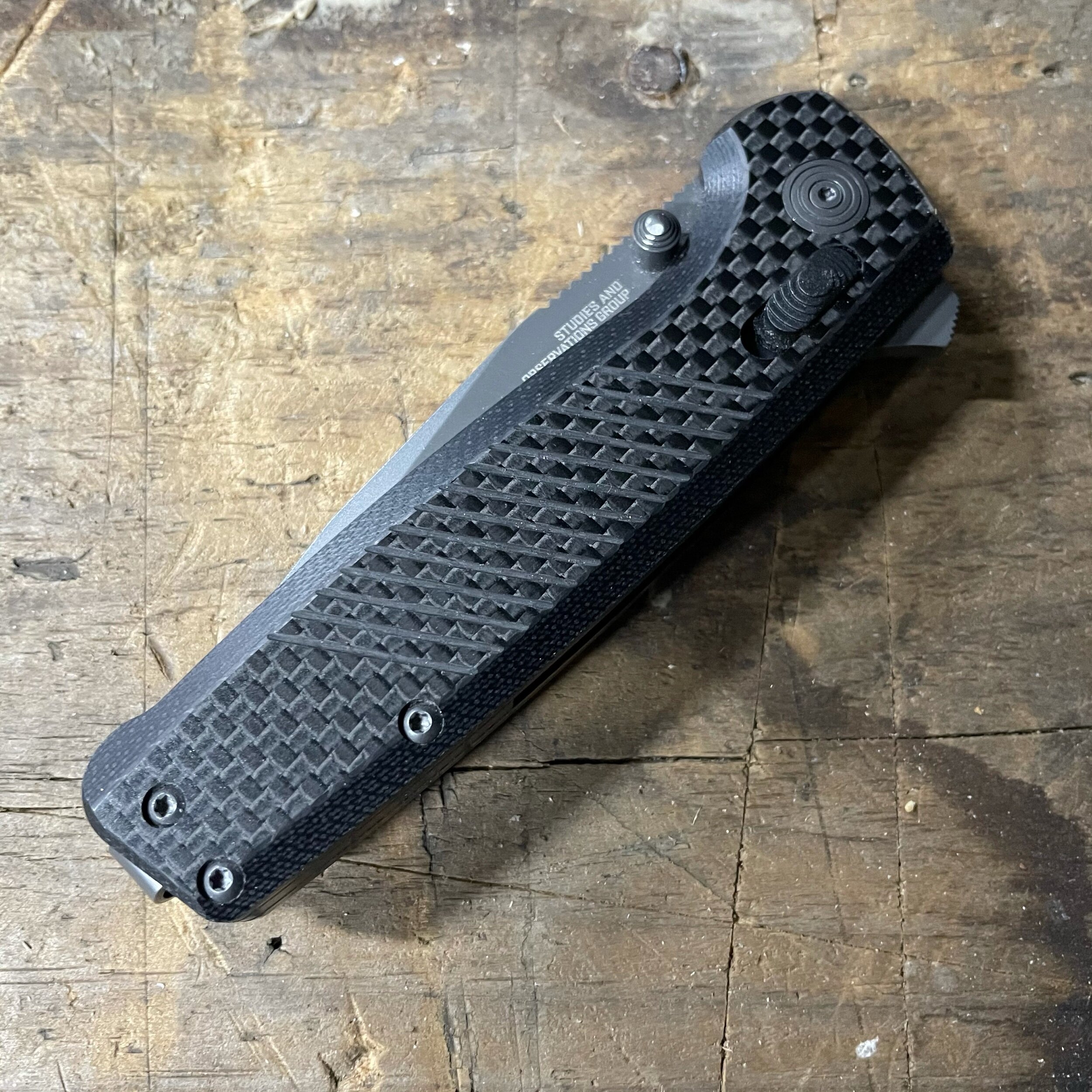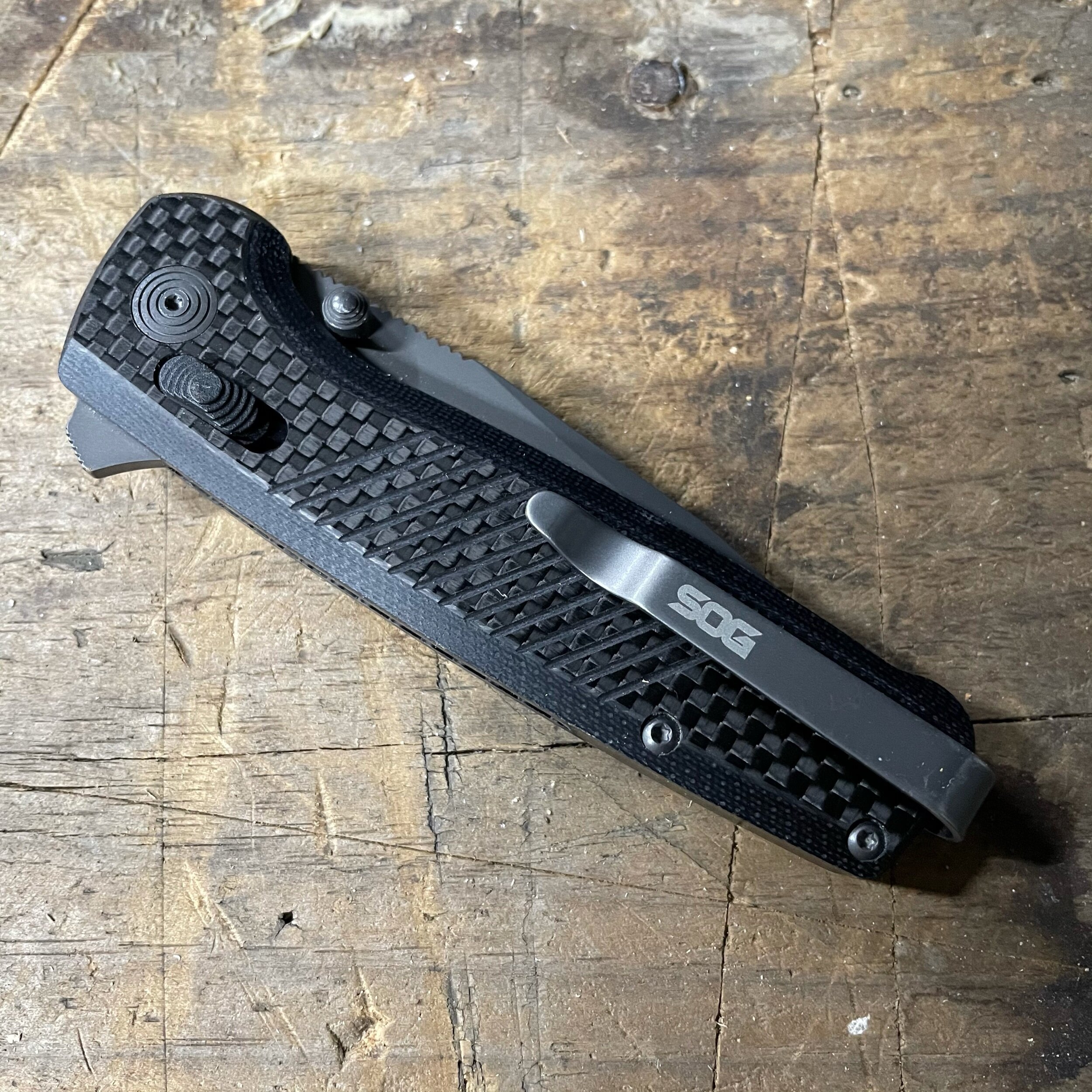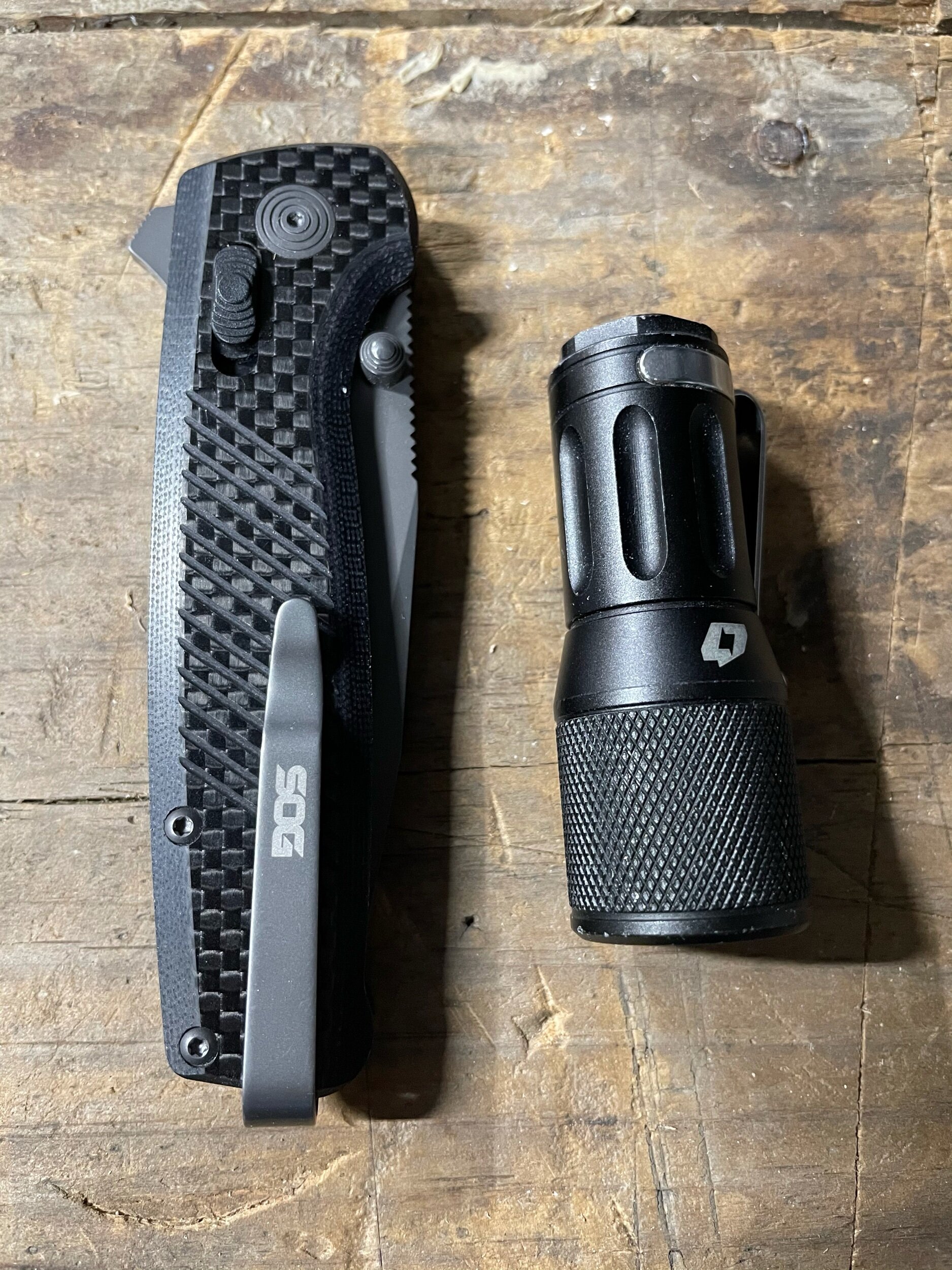SOG Terminus XR LTE
What if SOG made the best production folder in 2021? What if it came out in January? The idea that SOG would return to glory and climb out of the production knife dumpsters (filled with knife contagion like 5Cr) it was in circa 2014 is pretty amazing. Its not surprising, as SOG has always had some really strong high end pieces like the early aughts Tom Cat and their stacked leather fixed blades, but it is astounding. Its kind of like Boba Fett coming back to life in season 2 of Mandalorian—we all knew it was possible, but seeing it happen was nonetheless incredible.
The SOG Terminus XR LTE is one of the very best knives on the market right now and it retails for under $150. This knife is not just good. Its compelling. If you like knives at all the XR LTE should be on your radar right now. It takes everything good about the original, keeps it, swaps out the meh with good, and then doubles back for an insane innovation—structural carbon fiber elements— that helps the XR LTE leapfrog the competition. This is a tour de force review—written out of a sense of profound happiness. This is a good knife AND a knife I really like. Those things don’t always coincide, but they do in this knife.
Here is the product page. Here is my review of the original Terminus XR. The XR LTE costs $139.95. There are two variants, this one with the smoke gray blade coating and another with gold blade coating. There are no written reviews yet. Here is a video review. Finally, here is my review sample (provide by SOG for review):
Twitter Review Summary: SOG tweaks an already great knife making it better.
Design: 2
There is a lot to like here—thin blade, excellent variant of the sliding bar lock (SBL for short, now that the Axis lock has no patent, I think it is fair to refer to the entire class of locks differently), great in the pocket, and decent flipping action. The original XR had all of these things. The only thing new that I don’t like the blade coating, but that is really just a preference and not a flaw. The XR LTE drops in a better steel (S35VN) and, for the first time, a set of pure carbon fiber liners. These liners are exceptionally rigid and yet very lightweight. The entire knife clocks in at around 2 ounces. Odd that no other knife does this. To explain why, let me take you on a brief historical tour of carbon fiber.
Carbon fiber, or as it is more accurately known, carbon fiber reinforced polymer, is, like both G10 and micarta, a substrate material contained in resin. Here the substrate material is microscopic carbon fibers. These fibers were first produced in 1860 for use as filaments in lights. The process was crude and the yield from the process was vanishingly small. In the 1950s and 1960s Rolls Royce (the jet engine division, not the luxury car division) started doing real work on a high yield process with the idea of taking the resultant fibers, which were exceptionally strong on a volume and weight basis, and impregnating them into resin. For critical weight and rigidity applications, such as in airplanes, carbon fiber reinforced polymer was stiffer and lighter than steel, titanium, and aluminum. The process’s yield was further improved when researchers discovered they could get carbon fibers from petroleum byproducts. Over the years carbon fiber reinforced polymer slowly replaced metal components in aircraft. Then with even higher yields it became cheap enough for structural components in consumer products. Oddly, the knife industry decided that instead of using carbon fiber for its intended purpose it would use it as a decorative element on knife handles. The perception of carbon fiber as a “high end” material led to all sorts of stupid uses such as knives with full steel liners and carbon fiber handles. It was like reinforcing the stealth fighter with steel plates. Very few, if any knives used carbon fiber for its intended purpose, until now. The XR LTE and a few other SOG knives (the Kiku XR LTE) this year sport carbon fiber structural components. The results are exceptionally light and rigid knives. After 25 years of misuse, knife companies finally got it right.
The performance ratios are okay, but there is an unerring sense, upon seeing and then picking up the knife that something is off. Your brain quickly calculates the expected weight of an object and the XR LTE, thanks to the carbon fiber structural elements, throws that off. There are a few other knives, like the new CF Elite Bugout that have this same weirdness about them, but its a nice reminder that this is a knife built with an intelligent use of materials. For the record the B:W was 1.34. The B:H is .71.
Fit and Finish: 2
With nary a wiggle or wobble anywhere on the knife, either in the lock up or the edge grind, the XR LTE is an especially finely made knife given the price point. It lacks the touches, feel, or complexity of true masters of fit and finish but it is quite good for what it is—a mid priced knife from a huge production brand.
Grip: 2
Carbon fiber can be a little slick so SOG cut in some grooves on either side of the handle to give the material some staying power. SOG also chamfered the edges of the handle for the exact opposite reason—to make the handle more comfy in the hand. Both with the right choice resulting in a knife that is quite sedentary but also welcoming to the hand.
Carry: 2
Its not the thinnest knife in the pocket, but it isn’t a chunk either. What really stands out is the unshakeable sense that a knife this size shouldn’t be this light. That coupled with a strong clip design and a handle material that tracks in and out of the pocket with ease, makes the XR LTE a great knife in the pocket.
Steel: 2
S35VN’s main plus is something that steel snobs forget about—it offers very good performance at an exceptional price point. Think of it this way—while most knife nuts would pay $75 more for this knife to sport an S90V blade, that market is too small to get an S90V XR LTE made. In the trade off between performance and price, S35VN is right at the point where the steel works well enough to be acceptable to steel snobs, but also cheap enough to get large production companies to make the knife.
Blade Shape: 2
A solid, classic clip point with great clean lines. The swedge is nicely done and in use you are reminded why the clip point is so ubiquitous—it works. As I creep deeper into middle age, I am starting to get sanctimonious about blade shapes. The blob shapes with all of their “modified this” and “partial that” are not appealing to me visually. Give me a classic and I am happy.
Grind: 2
SOG has always had clean grinds. They haven’t always been thin grinds but when they were, they launched a whole genre of YouTube channels, thanks to Nutnfancy’s praise of the SOG Flash I’s “FFG.” While the XR LTE doesn’t sport an FFG (how is that for lip tripping initialisms?), it does sport a clean, even, thin grind on impressively thin stock. Its nice to see companies FINALLY start taking advantage of new, harder, tougher PM steels. Why bother with PM steels if you are going to use 1/4” blade stock? Thin blades make knives perform better, they are cheaper to make, and easier to carry. Thin is the way to go.
Deployment Method: 1
If there was one weakness to the XR LTE, its Achilles Heel, its the flipping action. Its not bad. It is leagues better than the flipping action on the horrendous Benchmade 300. But it is still a SBL flipper. There is only so much you can do here and while SOG has certainly made the flipping action good, its not great. Its about as good as a finely tuned pre-Tri-Way pivot Hinderer. In an age of detent ramp flippers from Brian Nadeau, that’s not great.
Retention Method: 2
No weird billboarding, no giant clip, just a simple,reversible, deep carry clip with no baloney. I stopped with baloney in second grade and I have never missed it. Not in my lunch and not in clip designs.
Lock: 2
SBLs have come a long way since the early days of Benchmade. If anything has convinced me that patents are bad for consumers, it is just how good SBLs have become, both by Benchmade and by others, now that the patent has expired. This lock is tight as drum with no blade play at all in any direction. It is easy to engage and disengage. Love me some SBL knives.
Other Consideration
Fidget Factor: Very High
SBLs always have good fidget factors. They are inherently good playgrounds. Similarly, flippers entertain those of us with short attention spans. Combining the two produces a knife that is oodles of fun to play with on a daily basis.
Fett Effect: Low
I hate blade coats. But here, that is the only thing that shows wear on this knife at all. With a good stonewash, the XR LTE would be immune from signs of daily use.
Value: High
At $140 you get a very good, very well rounded knife. Think of the XR LTE as a flipper Bugout without the unslightly rear tang gap and better steel. Given the price of the Bugout, and my belief that it is a pretty good value, its clear that the XR LTE is a better value.
Overall Score: 19 of 20
The bad aesthetic choice of a coated blade and the merely okay flipping action inherent on a flipper that uses an SBL are the only two nits I can pick here. The SOG Terminus XR LTE is a truly outstanding knife, a knife that is hard to flat out beat on the current market, and the culmination of SOG’s slow but now triumphant return to knife relevancy. This is a great knife. More importantly, it is an endearing knife. Having carried it quite a bit since it landed at my doorstep, I can tell you that I really enjoyed picking it in the morning, carrying it throughout the day, and using it whenever I could. It is thin and slicey, easy in the pocket, and nice to look at when sitting on a window sill catching some sun. SOG is back. The market has gotten much more competitive.
Competition
There a lot of very strong knives in this size and price range. The Spyderco quartet of affordable midsized knives: the Chaparral, Native 5, Delica, and Para3 (ordered in terms of quality from best to worst). Benchmade makes a bunch of similar sized blades: the Mini Grip, the Bugouts, the Valet, the Barrage (again in order). WE/Civivi makes about 45 blades in this size and price range including the Elementum, the McKenna, the Odium, and the Lastrade (which I just made up, but totally sounds like a WE/Civivi knife, WE Civivi, feel free to take the name…I’d love to see a made up name made into a real knife, like Shen Long back in the SF2 days). Reate has a few in the hopper with the Tribute and half a dozen designer produced blades. Even the Small Sebenza comes in roughly at the same price. Drop makes the Gent. Giant Mouse makes the Biblio. Lots and lots of competition. Gerber makes the Fastball and the Sedulo.
But here is the weird thing—nothing is clearly superior in everyway. A couple of knives are better designs (like the Sebenza) or have better fit and finish (see also: the Sebenza) but cost a lot more (see, yet again, the Sebenza and the oddly price Tribute). Some knives are the same price or even a smidge cheaper (see the Drop Gent), but the XR LTE is a better design. Over and over again as I run the XR LTE through my head thinking of similar blades nothing comes out as flat out better. When you can say that and the competition is the best the production world has to offer in terms of price and design, its clear the XR LTE is a winner. This should be on your short list of production knives and would make an excellent intro into the world of enthusiast grade folders.
Amazon Links
Purchasing items through the links below helps keep the blog 100% independent.

